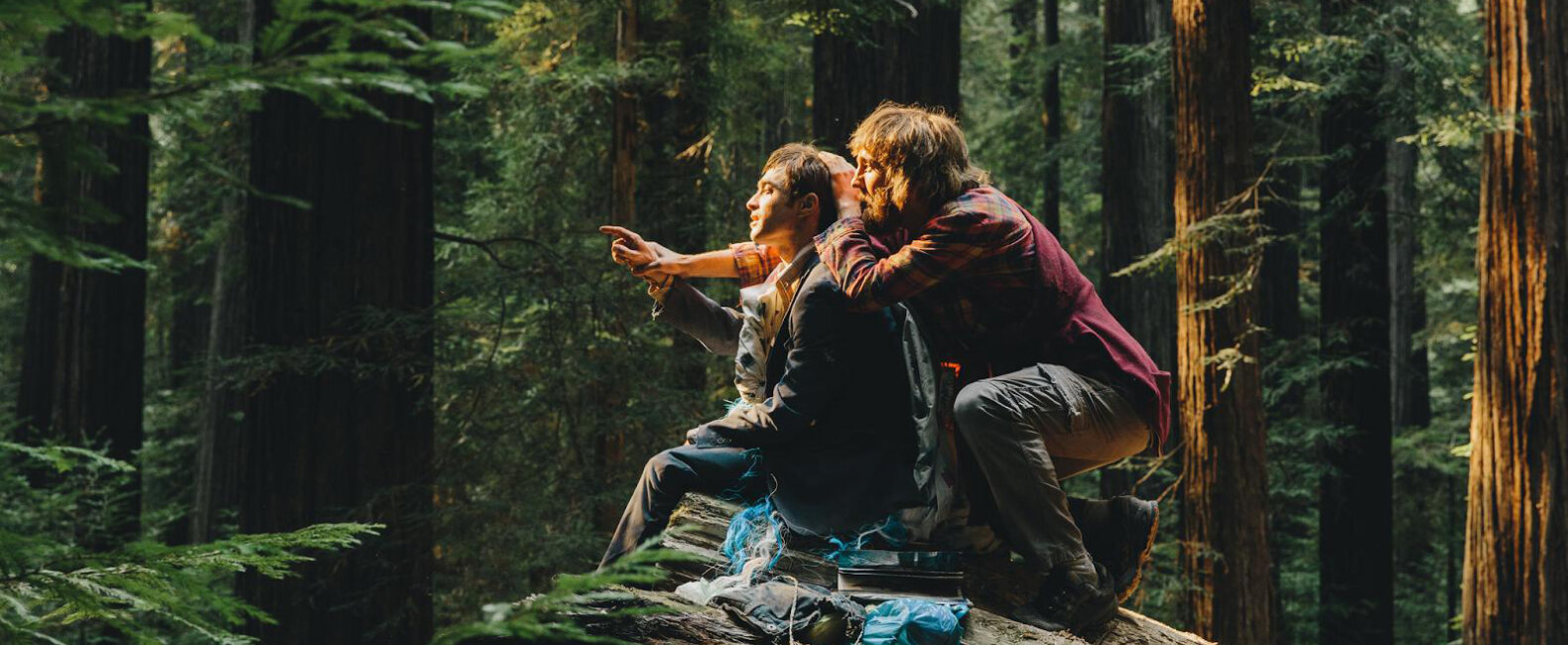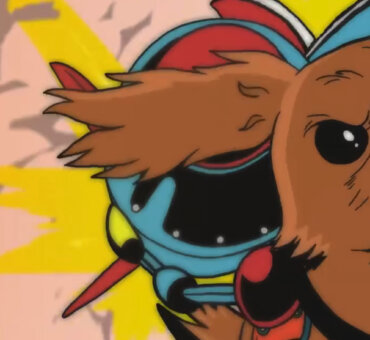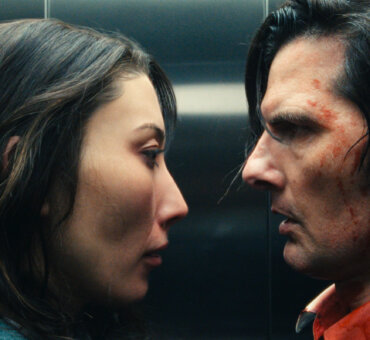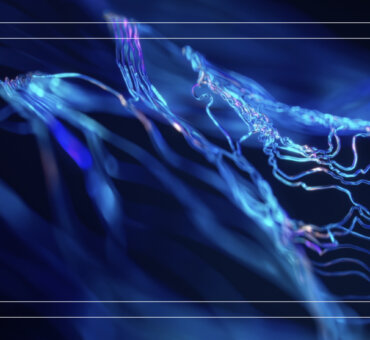“I’ve always made very, very strange films,” Matthew Hannam tells Filmsupply, a tidy summary of a skyrocketing editing career that has included such genre-bending projects as Swiss Army Man, James White, and the recent Netflix miniseries The OA. “I feel proud having well-served a smaller audience, rather than a general audience.” However, with the wide critical acclaim of Swiss Army Man and the massive Internet buzz around The OA, Matthew’s small audience might not stay small for long.
After an initial interest in cinematography and an assistant directing job on a microbudget feature, Hannam talked his way into his first editing gig when the feature film director had no one else. After we wrapped 12 days of shooting, I said, ‘So who’s going to edit this movie?’ And [the director] said, ‘Um, what?’ I was a big computer nerd, so I said, ‘I’ll do it!’ And it turns out editing suits me. I don’t like making decisions. I like being able to revise.”
Film editor Lucas Harger talked to Hannam from his hometown of Winnipeg.
Lucas Harger: I’ve always considered editing a combination of all the roles on set. It’s cool to hear you started with an interest in shooting and directing.
Matthew Hannam: It’s an exciting time in filmmaking because of the way we’ve learned how to make films. How old are you?
I’m 29.
I’m 35. I bet the way you learned to make movies is very different from how I learned. I shot and edited shorts on a 16mm Bolex when I went to film school in Winnipeg. The following year they stopped doing that. Then a few years later, everyone was learning on a RED and not using tape. It’s all changing so fast. I noticed that when I worked with [Swiss Army Man directors] the Daniels. They edit their stuff—that’s just a part of their process. It’s this more holistic thing, which is how I also try to think of editing. I’m not just thinking about cutting the material. I’m thinking about making a movie. Can we tell a better story if we move this scene here? Is this scene too bright and positive for the emotion we’re trying to create? Maybe I got too obsessed with the Murch book [In the Blink of an Eye], but we are the guardians of the cinematic qualities, right?
As editors, it’s our duty to protect the audience. Walter Murch keeps silhouette cutouts of people taped to his monitor to remind him that people are watching.
I’ve always made very, very strange films. So while you’re 100% correct that you’re always making your film for an audience, I always make sure the film I’m making is not for every audience. You have to become the audience for your movie and take on their spirit. Sometimes you need to challenge them. It’s not about making a purely enjoyable experience. Sometimes it’s about creating frustration or anticipation, which elicits a more significant effect in the next scene. I suspect some editors can calculate that. For me, it’s all about feeling. I just mess around, watch it, and lean on the experience of being a viewer.
One last thought on this. I remember when we were editing the film, James White. The crew had gone to Mexico and shot this fantastic sequence that was supposed to be the big flourish in the middle of the movie. This guy is having a horrible time with his mom dying, so he runs away to Mexico and has this time of release before the challenging part of his mother’s illness sets in. We loved the sequence. It had all of this incredible imagery. We had made a fantastic sequence from the material, but for some reason, it never felt right when we watched the movie. Finally, someone realized that it needs to feel the same way for the audience as it feels for the character: his entire experience in Mexico is too short and ultimately unsatisfying. So we cut out all the fantastic material and made it a rapid sequence interrupted by bad news. Suddenly the movie clicked.
Is that what you use viewings for? To find those areas that you hadn’t even realized weren’t working?
Screenings are the most essential part of editing a film. They’re 50% about getting notes and 50% about feeling the film from the other side. When I first started editing films, I was lucky to hang out with Ron Sanders (David Cronenberg’s editor) a few times. He told me that David and he always need someone else in the room when they watch a cut—even if it’s the janitor. (Although I’m sure many janitors have excellent taste in movies.) He said, ‘It doesn’t matter who it is. Something happens when you’re aware of the people around you.’
What were the screenings like for Swiss Army Man? There’s a particular audience for that film.
That film was so interesting to work on. I didn’t know [the Daniels] beforehand. I was introduced to them by the producer, and I came on after the film was shot. But those two guys deserve so much credit for editing that film. Like I said, that’s just how they work. Those big montages… I looked at the footage and asked, ‘What is this?’ And they said, ‘Oh, well, we’re going to do this and this and this and this and this.’ They’re two of the most brilliant people I’ve ever met.
When I started working on the film—and I did this for every film, especially if it was allegorical—I tried to develop a real-world story. For example, when I was cutting Enemy, I was like, Okay, this is a movie about a guy who makes a choice to leave his wife and move in with his girlfriend, but he doesn’t tell his wife. He says he’s going to his mom’s for the weekend, and then he returns on his decision. So when I sat with Swiss Army early on, I asked, ‘Guys, what is this movie about?’ And they said, ‘It’s about a guy who finds a dead body in the woods with magical powers.’ From there, we slowly eked out this story of a guy who’s depressed and lonely and goes out into the woods with many bad feelings. A lot of the work was shaping the emotional arc of the character. Initially, we went full quirk, but people weren’t responding how we wanted. They weren’t getting everything. But that led to our fantastic time together, shaping the film’s tone. Making it darker. Making it light again. Digging into the character of Hank, [played by Paul Dano], and finding out what was actually going on with him, making sure that was intact in the footage we chose.
Did you feel like people weren’t getting everything in the initial screenings?
We tried various ways to get to the story’s heart. At the viewing, people would always focus on something different. So we’d realize, Okay, we did too much here. Time to pull that back. Sometimes people were grossed out, that was usually a good thing. Sometimes it was too distracting, and we’d take it out. Many people were focused on the possibility that none of it happened, that he was in her backyard the whole time, that there was no desert island. But the Daniels didn’t want to go for that ‘false narrative’ thing. They wanted to make it feel like he had traveled on a magical adventure somewhere.
We got to the point where we were screening it every one or two weeks for different audiences and then going back as a team and talking about what we’d learned. Because we were all so dialed in, we were able to turn around a new version of the movie in just a week.
The ending of the film is so great. Was it hard to get that right?
We always loved the ending, but getting there was challenging. We had to find a way to get him from the backyard down to the beach, which was hard because it felt like it ended in the backyard. Ultimately, the trick was to make the backyard moment less satisfying than it was initially. Making it less satisfying made it feel like less of an ending. But that’s challenging to do. When you have a satisfying scene, it’s hard to get rid of it.
The ending works so well for both the physical and metaphysical stories. If you look at it philosophically, he faces his fears in front of everybody. His dad is proud of him. He also lets go of the farting corpse that is keeping him from engaging with the real world. Whether or not that moment is actually happening doesn’t matter because he is moving forward as a character in both realms.
What’s your workflow for building an emotional arc? Do you use notecards?
I wish I were more meticulous like that. For me, it’s all about having conversations. I believe talking is very important. After screening, I would like to have a half-day-long chat where we can take notes and decide what we want to do now. Then, I try to execute the tasks very quickly without fixating too much on the details. Often I’ll have a notebook loaded with thoughts and ideas and reminders to ‘try this, try that.’ It’s all about trial and error for me. Sometimes I feel ashamed that I’m not more calculated, but I love the experience of working quickly, watching it, and feeling it out instead of getting obsessed with ‘Is that shot three frames too long?’ When I do that, I lose the big picture of what was good about the scene in the first place.
Those conversations you have with your collaborators are so meaningful. It sounds corny, but you need to be friends with those people because you run into so many obstacles when you’re making a film. So many moments when you’re like, ‘I can’t figure this out.’ You need to be able to say that to each other. One of the most important things you can say is: ‘I don’t know what we’re doing right now.’ You can pretend you know what you’re doing if you want. You can be cocky. But that could send you down the wrong path for a week. It’s better to say, ‘How can we fix this? Let’s take a walk.’
I don’t know if the crew would agree, but one of the best days we had on Swiss Army Man was when we all looked at each other and said, ‘We can’t work on this anymore. We’re too tired and messed up.’ So we left. We saw a movie together, ate lunch, and returned the next day, recharged because we’d taken the pressure off. It’s so important to remember that we’re all just people.
The best films are made from a posture of vulnerability—it’s the most collaborative art form.
Totally. I think the Daniels chose me to edit their movie because during the interview, I said, ‘I love working with people, and I like working in whatever way is best.’ It helped them know they could grab a sequence and mess around with it themselves, instead of telling me what they thought I should do. I try to keep everything really free and open. With new directors, more and more, that’s what’s desired.
What does it take to become a better editor?
Compassion is one of the most important qualities in being a good editor. Just knowing that it will all turn out okay and that you must keep working and not freak out during the process. Another thing is learning to get over your habits. At first, you think, Oh, these are the cool things I do while editing! You have your bag of tricks. Your style. But you have to learn that you don’t really have a style. I don’t believe in my style anyway. I believe in finding the film. Finding what the film wants. The coolest thing that can happen is you go from film to film thinking, What kind of interesting thing can we do in this movie? What can we do that will be unique and tell this story better? As you move along in your career, you become more flexible. That’s it: being flexible, sympathetic, compassionate, and diligent. Those are the things you need. Those are the key elements.






